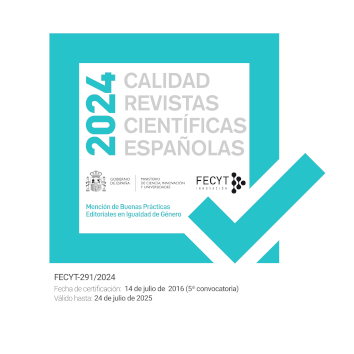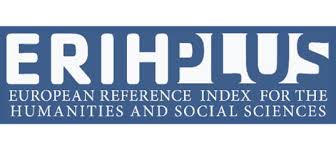Degree of acceptance of digital evaluation systems adapted to the use of educational technological resources based on Augmented Reality
DOI:
https://doi.org/10.17398/1695-288X.22.2.135Keywords:
Educative Technology, Augmented Reality, Evaluation, Sciences, Secondary EducationAbstract
The use of immersive technologies, especially Augmented Reality (AR), is presently one of the main technological trends in the field of education. Some studies carried out in recent years in this field highlight that traditional evaluation systems continue to be used and raise the possibility of using adapted evaluation systems. This research, based on primary sources of information, seeks empirical evidence regarding the need to use digital evaluation systems adapted to technological resources in Science subjects and in stages of Compulsory Secondary Education. The methodology used is quantitative research based on the design and statistical analysis of the responses given by students to a questionnaire created ad hoc, administered to assess an AR educational resource used in class to explain a key concept in connection with the subject. The results obtained through the exploratory factorial analysis of the students’ answers reveal, as a latent construct, a high level of acceptance of the digital evaluation system used. The analysis of the data obtained in this study allows us to establish the hypothesis that a digital evaluation system adapted to the use of an immersive AR technological resource can generate a positive impact on the students' learning process.
Downloads
References
Abad, F., Olea, J., Ponsoda, V., y García, C. (2011). Medición en ciencias sociales y de la salud. Síntesis.
Aiken, L. (1980). Content Validity and Reliability of Single Items or Questionnaires. Educational and Psychological Measurement, 40(4), 955-959. https://doi.org/10.1177/001316448004000419
Akçayır, M., Akçayırb, G., Miraç, H., y Akif, M. (2016). Augmented reality in science laboratories: The effects of augmented reality on university students’ laboratory skills and attitudes toward science laboratories. Computers in Human Behavior, 57, 334-342. https://doi.org/10.1016/j.chb.2015.12.054
Alalwan, N., Cheng, L., Al-Samarraie, H., Yousef, R., Alzahrani, A., y Sarsam, S. (2020). Challenges and Prospects of Virtual Reality and Augmented Reality Utilization among Primary School Teachers: A Developing Country Perspective. Studies in Educational Evaluation, 66(100876). https://doi.org/10.1016/j.stueduc.2020.100876
Alkhattabi, M. (2017). Augmented Reality as E-learning Tool in Primary Schools’ Education: Barriers to Teachers’ Adoption. International Journal of Emerging Technologies in Learning, 12(2), 91-100. https://doi.org/10.3991/ijet.v12i02.6158
Bacca, J., Baldiris, S., Fabregat, R., Graf, S., y Kinshuk. (2014). Augmented Reality Trends in Education: A Systematic Review of Research and Applications. Educational Technology & Society, 17(4), 133–149.
Blázquez, F., Alonso, L., y Yuste, R. (2017). La evaluación en la era digital. Síntesis.
Brown, M., McCormack, M., Reeves, J., Brooks, C., Grajek, G., Alexander, B., Bali. M., Bulger, S., Dark, S.,
Engelbert, N., Gannon, K., Gauthier, A., Gibson, D. Gibson, R., Lundin, B. Veletsianos, G., y Weber, N. (2020). 2020 EDUCAUSE Horizon Report, Teaching and Learning Edition . Louisville, CO: EDUCAUSE. https://library.educause.edu
Cabero, J., y Barroso, J. (2013). La utilización del Juicio de Experto para la evaluación de TIC: El Coeficiente de Competencia Experta. Bordón. Revista de Pedagogía, 65(2), 25-38. https://doi.org/10.13042/brp.2013.65202
Cabero, J., Barroso, J., y Gallego, Ó. (2018). La producción de objetos de aprendizaje en realidad aumentada por los estudiantes. Los estudiantes como prosumidores de información. Revista Tecnología, Ciencia y Educación(11), 15-16. Obtenido de https://tecnologia-ciencia-educacion.com/index.php/TCE/article/view/221
Cabero, J., Leiva, J., Moreno, N., Barroso, J., y López, E. (2016). Realidad Aumentada y educación. innovación en contextos formativos (1ª ed.). Octaedro.
Cabero-Almenara, J., Barroso-Osuna, J., Llorente-Cejudo , C., y Fernández, M. (2019). Educational Uses of Augmented Reality (AR): Experiences in Educational Science. Sustainability, 11(18). https://doi.org/10.3390/su11184990
Cai, S., Chiang, F.-K., Sun, Y., Lin, C., y Lee, J. (2017). Applications of augmented reality-based natural interactive learning in magnetic field instruction. Interactive Learning Environments, 25(6), 778–791. https://doi.org/10.1080/10494820.2016.1181094
Carrascal, S., Delgado-Rodríguez, S., y Garcia-Fandiño, R. (2023). Design, Development and Validation of an Educational Methodology Using Immersive Augmented Reality for STEAM Education. Journal of New Approaches in Educational Research, 12(1), 19-39. https://doi.org/10.7821/naer.2023.1.1250
Davis, F. (1989). Perceived Usefulness, Perceived Ease of Use, and User Acceptance of Information Technology. MIS Quarterly, 13(3), 319-340. https://doi.org/10.2307/249008
Delgado, S. (2021). Diseño, desarrollo y validación de un modelo metodológico educativo basado en software inmersivo de Realidad Aumentada como recurso didáctico. Mejora en el aprendizaje de ciencias en Educación Secundaria (Tesis Doctoral). Universidad Camilo José Cela, Madrid, España. www.ucjc.edu
Fombona, J., y Pascual, M. (2017). La producción científica sobre Realidad Aumentada, un análisis de la situación educativa desde la perspectiva SCOPUS. EDMETIC, Revista de Educación Mediática y TIC, 6(1), 39-61. https://doi.org/10.21071/edmetic.v6i1.5807
Hair, J., Black, W., Babin, B., y Anderson, R. (2018). Multivariate Data Analysis (8th ed.). Cengage Learning, EMEA.
Han, J., Jo, M., Hyun, E., y So, H.-j. (2015). Examining young children’s perception toward augmented reality-infused dramatic play. Education Technology Research Development, 63(3), 455-474. https://doi.org/10.1007/s11423-015-9374-9
Herpich, F., Fernanda da Silva, P., y Rockenbach, L. (2021). Efecto de las interacciones de estudiantes de ciencias con laboratorios virtuales de realidad aumentada para el desarrollo de visualización espacial. Revista Latinoamericana De Tecnología Educativa - RELATEC, 20(2), 29-47. https://doi.org/10.17398/1695-288X.20.2.29
Keller, J. (2010). Motivational Design for Learning and Performance. The ARCS Model Approach. Springer.
Kim, K., Hwang, J., Zo , H., y Hwansoo, L. (2014). Understanding users’ continuance intention toward smartphone augmented reality applications. Information Development, 32(2), 161-174. https://doi.org/10.1177/0266666914535119
Livingstone, S. (2012). Critical reflections on the benefits of ICT in education. Oxford Review of Education, 38(1), 9-24.
Lorenzo-Seva, U., y Ferrando, P. J. (2013). Factor 9.2: A comprehensive program for fitting exploratory and semiconfirmatory factor analysis and IRT models. Applied Psychological Measurement, 37(6), 497–498. https://doi.org/10.1177/0146621613487794
Nieto, E. (2016). El papel de las tecnologías en el desarrollo de los aprendizajes y en la mejora del rendimiento académico. En M. Rodríguez, E. Nieto, y R. Sumozas, Las tecnologías en educación. Hacia la calidad educativa ( pp. 17-33). Síntesis.
Organización para la Cooperación y el Desarrollo Económicos. (2015). Students, Computers and Learning: Making the Connection. PISA, OECD Publishing. http://dx.doi.org/10.1787/9789264239555-en
Pelletier, K., Brown, M., Brooks, D., McCormack, M., Reeves, J., Arbino, N., Bozkurt, A., Crawford, S., Czerniewicz, L., Gibson, R., Linder, K., Mason, J., y Mondelli, V. (2021). 2021 EDUCAUSE Horizon Report, Teaching and Learning Edition. Boulder, CO: EDUCAUSE Publications. https://library.educause.edu
Prendes, C. (2015). Realidad Aumentada en educación: Análisis de experiencias prácticas. Píxel-Bit. Revista de Medios y Educación(46), 187-203. https://doi.org/10.12795/pixelbit.2015.i46.12
Sáez, J. (2017). Investigación educativa. Fundamentos teóricos, procesos y elementos prácticos (1ª ed.). UNED.
Sáez-López, J., Román-González, M., y Vázquez-Cano, E. (2016). Visual programming languages integrated across the curriculum in elementary school: A two year case study using "Scratch" in five schools. Computers & Education, 97, 129-141. https://doi.org/10.1016/j.compedu.2016.03.003
Tarng, W., Ou, K.-L., Lu, Y.-C., Shih, Y.-S., y Liou, H.-H. (2018). A Sun Path Observation System Based on Augment Reality and Mobile Learning. Mobile Information Systems , 2018, 1-10. https://doi.org/10.1155/2018/5950732
Downloads
Published
Issue
Section
License
Authors who publish in this journal accept the following conditions:
1. The Author retains copyright in the article. Upon acceptance of the article, the author shall grant to the Publisher the right of first publication of the article. with the dcoument registered with the Creative Commons Attribution-NonCommercial-NoDerivative 4.0 International (CC BY-NC-ND) license, which allows to third parties to use what is published whenever they mention the authorship of the work and the first publication in this journal.
2. Authors can make other independent and additional contractual agreements for the non-exclusive distribution of the article published in this journal (eg, include it in an institutional repository or publish it in a book) provided they clearly indicate that the work was published for the first time in this journal.
3. Authors are allowed and recommended to publish their work on the Internet (for example on institutional or personal pages) before and during the review and publication process, as it can lead to productive exchanges and a greater and faster diffusion of published work (see The Effect of Open Access).









